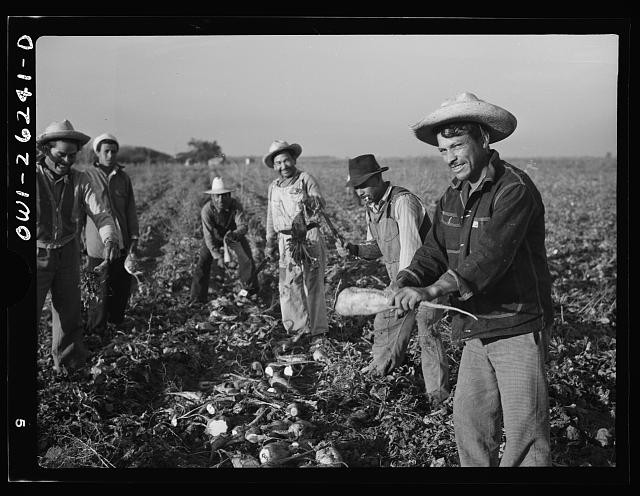The Bracero Program, initiated in 1942, was a series of bi-national agreements between Mexico and the United States. This program stands as a significant chapter in the history of Immigrant Mexican Men in America, addressing critical labor shortages in the agricultural sector of the U.S. during World War II. Millions of Mexican men were legally contracted to work in the United States on short-term labor agreements, fundamentally reshaping the landscape of American agriculture and Mexican migration.
The backdrop of World War II created an urgent need for labor in the United States, especially in agriculture. With many Americans joining the military, the agricultural workforce was severely depleted. To counteract this, the U.S. government looked towards its southern neighbor, Mexico. The Bracero Program was the formal response, designed to bring in Mexican workers—braceros, meaning “manual laborers”—to fill these essential jobs. El Paso, Texas, became a major entry point, processing countless immigrant Mexican men from Ciudad Juarez and beyond, eager to participate in the program. Recruitment centers were established, managed by the U.S. Agricultural Department and farmer associations, with the Farm Bureau overseeing English-language contracts offered to these workers.
While the program was established with protocols intended to protect these immigrant Mexican men from discrimination and ensure fair wages, the reality often fell short. Many braceros faced harsh conditions, including wage deductions for room and board, exposure to dangerous chemicals in the fields, and overt discrimination. Despite these challenges, the Bracero Program continued for over two decades, becoming a defining experience for many immigrant Mexican men and their families.
The Bracero Program officially ended on December 31, 1964, as agricultural mechanization advanced. Its legacy is complex. On one hand, it provided crucial labor to the U.S. and offered economic opportunities for millions of immigrant Mexican men, who sent remittances back to their families in Mexico. On the other hand, it also contributed to a cycle of cheap labor and, paradoxically, an increase in both documented and undocumented immigration flows. The program remains a pivotal point in understanding labor migration, U.S.-Mexico relations, and the experiences of immigrant Mexican men in the 20th century.
